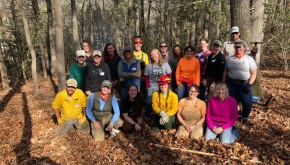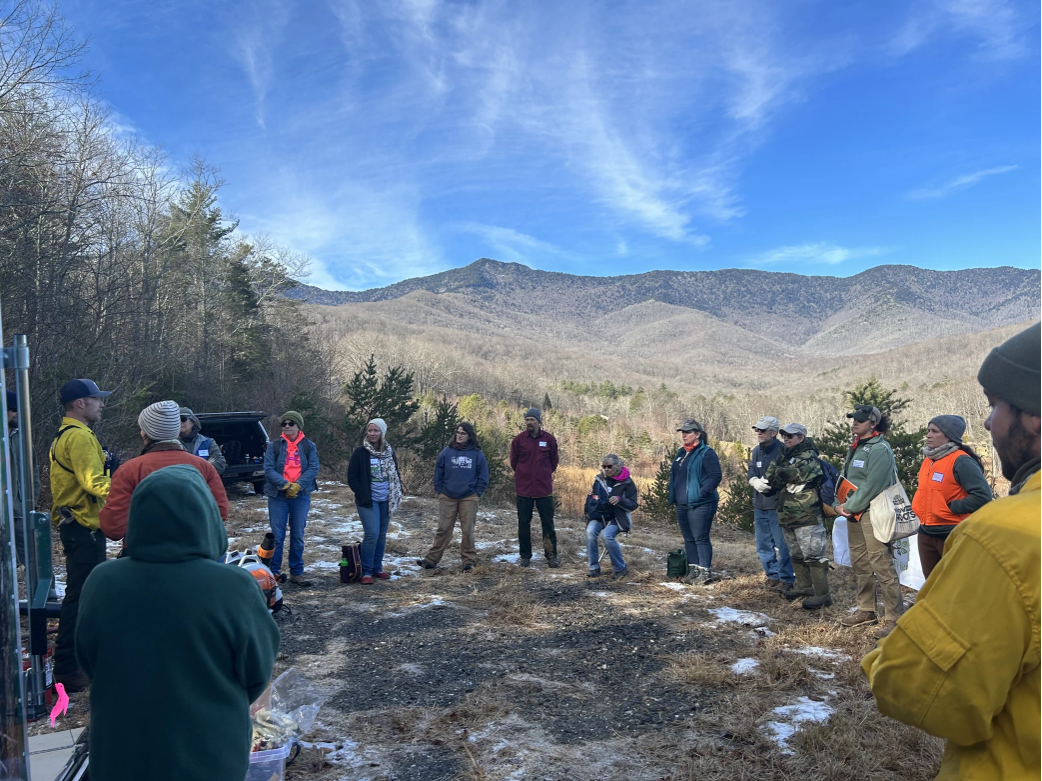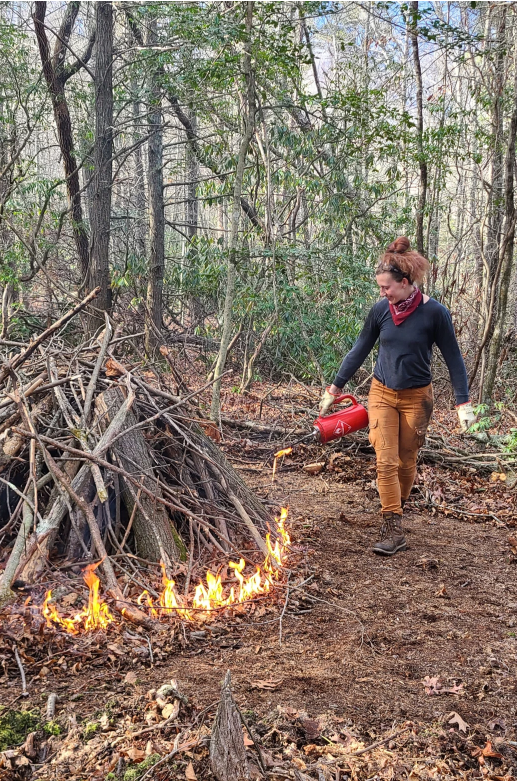
By Zac O'Donnell and Mackenzie Alexander
This article was originally published on the ForestHer North Carolina website on January 11, 2024.
Editor’s Note: Zac O'Donnell is the Coordinator of the Southern Blue Ridge Prescribed Burn Association and Mackenzie Alexander is a Forestry Associate with EcoForesters and ForestHer NC's Communications Chair. This event took place thanks to the generosity and initiative of Olivia and Rocky Ramos and enthusiasm of the Southern Blue Ridge PBA. Do you have a project to share or co-create with fellow ForestHers? Let us know if you want to host a gathering on your land and we can help make that happen!
 Fire is an excellent forest management tool to have in your toolbox. It’s cost effective, efficient, and beneficial to many of our natural ecosystems processes. Sometimes, however, to make the best use of that fire and the effort involved, it needs a little help from us.
Fire is an excellent forest management tool to have in your toolbox. It’s cost effective, efficient, and beneficial to many of our natural ecosystems processes. Sometimes, however, to make the best use of that fire and the effort involved, it needs a little help from us.
When fire hasn’t burned regularly in a region for close to a century, the accumulated debris creates conditions where fire will do one of two things: burn dangerously hot, or not burn hot enough. Larger sticks and logs retain more moisture, and won't always burn during medium or low-intensity prescribed fire, resulting in a less consistent or patchy burn. Removing those larger debris can help prescribed fire burn more evenly, and achieve the desired fire intensity and results.
Olivia and Rocky Ramos are actively managing their land in Yancey County to bring more diversity back to the dense laurel and rhododendron thickets, and restore their fields for pollinators and farm use. While they have successfully used broadcast controlled fire in the past, we decided to use a pile burn method to help clear some of the larger fuels before their next burn.
 On Friday, December 8th, our crew of 20 burned 6 large piles that had been covered with plastic weeks before, and continued adding woody debris as the piles burned. With flames around 20 feet high, we carefully monitored the surrounding trees and watched for embers landing in the woodland leaf litter. Despite our best efforts, the flames were really too hot for roasting hotdogs and marshmallows.
On Friday, December 8th, our crew of 20 burned 6 large piles that had been covered with plastic weeks before, and continued adding woody debris as the piles burned. With flames around 20 feet high, we carefully monitored the surrounding trees and watched for embers landing in the woodland leaf litter. Despite our best efforts, the flames were really too hot for roasting hotdogs and marshmallows.
While the majority of our workday was spent adding fuel to the fires, some of our crew used blowers and fire rakes to clear an existing fireline through the woods. The highly gratifying work, beautiful weather, and incredible group of landowners and forestry professionals made for an excellent day of fire prep.
This event was a fantastic example of having folks from a variety of backgrounds and interests come together to learn how to help their forests while also building an empowering and inclusive community. Individuals from all across the state attended this event and each of them was willing to put in the work! Watching the confidence to take charge on land management techniques spark in each attendee was an amazing experience and one we hope to continue to achieve.

